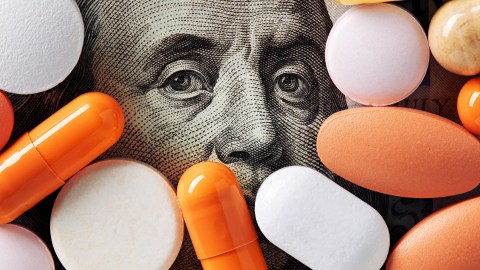Wasted healthcare spending is rampant. A big source is patients’ fault.

- Americans don’t show up to about a quarter of their scheduled healthcare appointments, wasting an estimated $150 billion in healthcare costs each year, which results in higher insurance premiums for all.
- Breaking down no-show rates by clinical specialty, people are most likely to show up for pediatric, primary care, and dermatology appointments and least likely to attend scheduled cardiology, endocrinology, and physiotherapy appointments.
- Healthcare providers can only poke and prod us so much to take responsibility for our health, whether that takes the form of eating right, exercising, or simply attending our scheduled appointments. Our health, and the cost to maintain it, is up to us.
The American healthcare system is a sieve, with wasted spending throughout the enterprise. Excessive prices account for $169 billion of needless costs, fraud and abuse contribute another $185 billion, clinical inefficiency $202 billion, pointless administrative expenses $281 billion, missed prevention $310 billion, and overuse $451 billion, according to a review published in 2020 in the New England Journal of Medicine’s “Journal Watch.” Add all this together, and it’s conceivable that fully half of what Americans spend on healthcare is wasted. If solving this issue translates to drastically reduced insurance premiums, a lot of Americans undoubtedly would be elated.
But nestled in those massive numbers is a sizable contributor to wasted healthcare spending for which patients are undeniably responsible: We don’t show up to about a quarter of scheduled appointments. This absenteeism costs an average of over $200 per incident, bloating healthcare spending by an estimated $150 billion each year!
Showing up is half the battle
There are numerous reasons that people don’t attend scheduled appointments: The condition that triggered the visit might have resolved; patients might shy away due to fear or anxiety; they might worry about a sizable bill if they are uninsured or have a high deductible; they might lack an easy means of transportation; childcare could get in the way; the weather might have turned bad; they might think the appointment is unlikely to boost their health; or they simply might have forgotten about it.
Younger age, lower socioeconomic status, and housing distance from healthcare services best predict who is most likely to miss their appointments. No-show rates are typically highest on Mondays and Fridays during the week, and occur most often in September, coinciding with kids going back to school. Patients are more likely not to show up as the time between scheduling and the appointment itself increases.
Breaking down no-show rates by clinical specialty, people are most likely to show up for pediatric, primary care, and dermatology appointments and least likely to attend scheduled cardiology, endocrinology, and physiotherapy appointments. Most embarrassingly, patients skip close to 60% of their physiotherapy sessions.
Apart from the added costs, which manifest in higher insurance premiums for all, there are subtler ways that healthcare consumers are harmed by missed appointments. As researchers wrote in an article recently published in PeerJ Computer Science:
“Patients are perhaps affected the most by no-shows, whether it is the patient who has missed the appointment or the others who could not book appointments due to unavailabilities. When patients miss their appointments, important treatments get delayed, leading to complications that require costly and complex medical procedures.”
Time for no-show fees?
What can be done to reduce no-shows? Healthcare providers already have implemented automated systems that remind patients of their appointments via text and email, but these have been minimally effective. A study carried out at a large Veterans Affairs hospital system in Texas serving 76,000 patients found that these reminders reduced the no-show rate from 18.17% in the four years before implementation to 16.96% in the four years after.
Though unpalatable, healthcare providers also could take a page out of the airline industry’s playbook and implement “no-show fees.” As an alternative, they could incentivize showing up for appointments in some fashion.
Putting technology to work to solve the problem, telehealth is becoming increasingly common, allowing patients to see doctors from their own homes. Additionally, some researchers are designing and championing machine learning algorithms to predict attendance. A recent attempt, which simply combines patients’ attendance history with the times of the day and week that they missed or made their appointments, suggests to the patient and scheduler the optimal time slot at which the patient is most likely to attend.
Of course, healthcare providers can only poke and prod us so much to take responsibility for our health, whether that takes the form of eating right, exercising, or simply attending our scheduled appointments. Our health, and the cost to maintain it, is up to us.





